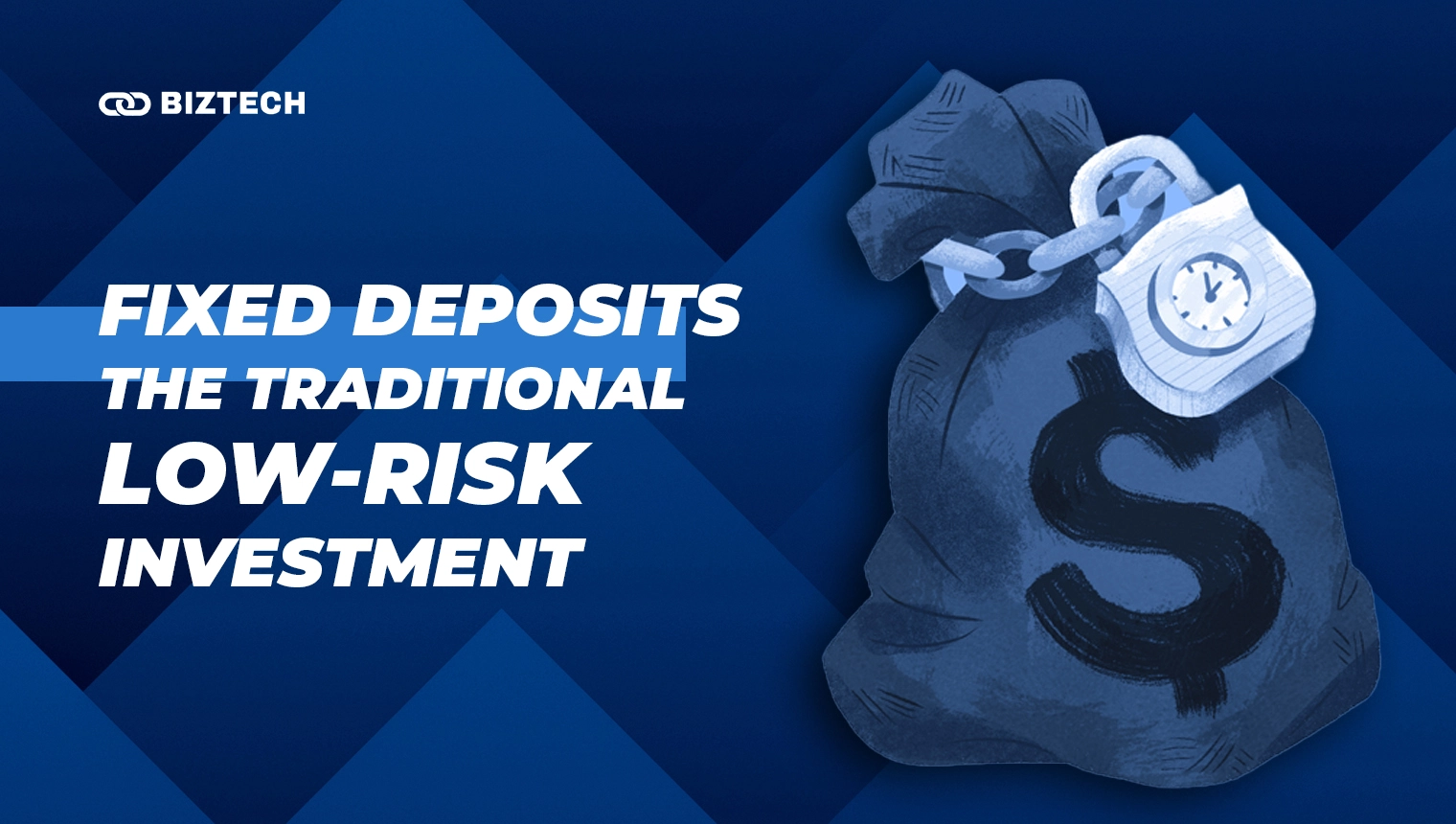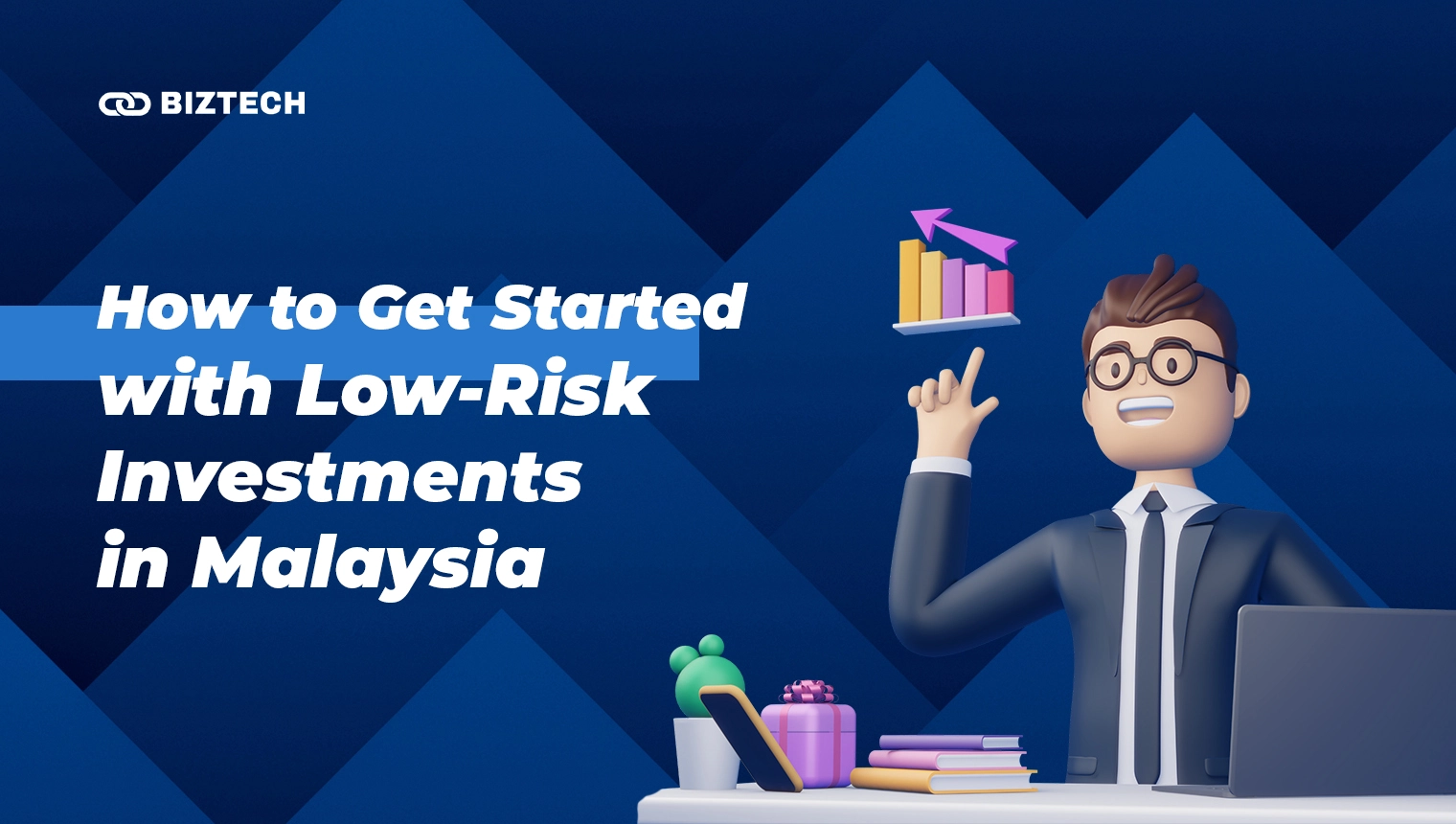Finding your way through the intricate finance universe necessitates achieving an ideal equilibrium between potential risks and anticipated returns. This comprehensive guide explores the most reliable and secure low risk investment opportunities available in Malaysia, providing a solid foundation for growing your wealth while minimising potential losses.
- 1. Employees Provident Fund (EPF): A Government-Backed Retirement Savings Scheme
- How the EPF Works
- Benefits of Investing in EPF
- EPF Historical Returns
- 2. Amanah Saham Bumiputera (ASB) and Amanah Saham Malaysia (ASM): Unit Trust Funds with Consistent Performance
- How do ASB and ASM Work?
- Benefits of Investing in ASB and ASM
- Amanah Saham Bumiputera (ASB) and Amanah Saham Malaysia (ASM) Historical Returns
- Source: ASNB Official Website
- 3. High-Yield Savings Account: Earn Competitive Interest Rates with Minimal Risk
- How High-Yield Savings Accounts Work
- Benefits of Investing in a High-Yield Savings Account
- High-Yield Saving Account Details
- 4. Fixed Deposits: A Time-Tested Low-Risk Investment Strategy
- How Fixed Deposits Work
- Benefits of Investing in Fixed Deposits
- 5. Money Market or Cash Management Fund: Capital Preservation and Liquidity
- How Money Market Funds Work
- Benefits of Investing in Money Market Funds
- Money Market or Cash Management Fund (5-year annualised returns)
- 6. Real Estate Investment Trust (REIT): Diversify Your Portfolio with Income-Generating Properties
- How REITs Work
- Benefits of Investing in REITs
- 7. Exchange-Traded Fund (ETF): Access a Diversified Portfolio of Assets with Minimal Risk
- How ETFs Work
- Benefits of Investing in ETFs
- Bonds 5-year Annualised Returns
- 8. Bonds: Lend Money to the Government or Corporations for a Fixed Return
- How do Bonds work?
- Benefits of Investing in Bonds
- Getting Started with Low-Risk Investments in Malaysia: A Step-by-Step Approach
- Step 1: Evaluate Your Financial Objectives and Risk Capacity
- Step 2: Research and Compare Investment Options
- Step 3: Seek Expert Advice from Financial Professionals
- Step 4: Open an Investment Account and Start Investing
- Conclusion
- Frequently Asked Questions
Malaysia’s robust economy, political stability, and well-regulated financial markets create an ideal environment for investors seeking low-risk investment opportunities. With a wide range of options to choose from, you can confidently invest in Malaysia’s thriving financial landscape, knowing that your capital is protected and poised for growth.
1. Employees Provident Fund (EPF): A Government-Backed Retirement Savings Scheme
The Malaysian Employees Provident Fund (EPF) is a mandatory savings plan that ensures a safe and stable return on investment. Being a government-supported pension savings plan, workers and their employers contribute a certain percentage of the employee’s monthly wage. This system provides Malaysians with a reliable and low-risk investment alternative.
How the EPF Works
The EPF operates under a two-account system. Account 1 is primarily for retirement savings, while Account 2 is designated for pre-retirement withdrawals, such as housing, education, and medical expenses. Most of your contributions (70%) go to Account 1, while the remaining 30% is allocated to Account 2.
Your contributions to the EPF are invested in various assets such as stocks, bonds, and property holdings. The returns generated from these investments are distributed as annual dividends to your EPF accounts, allowing your savings to grow over time.
Benefits of Investing in EPF
- Guaranteed minimum dividend: The EPF guarantees a minimum annual dividend of 2.5% on your contributions, providing a stable return on investment.
- Tax relief: Payments made to the EPF can be deducted from your taxes, decreasing your taxable earnings and potentially reducing the amount you owe in taxes.
- Hassle-free investment: As the EPF is a mandatory savings scheme, contributions are automatically deducted from your salary, making it a convenient and hassle-free investment option.
EPF Historical Returns
| Year | Simpanan Shariah | Conventional Savings |
| 2018 | 5.90% | 6.15% |
| 2019 | 5.00% | 5.45% |
| 2020 | 4.90% | 5.20% |
| 2021 | 5.65% | 6.10% |
| 2022 | 4.75% | 5.35% |
| 2023 | 5.40% | 5.50% |
Source: EPF Official Website
2. Amanah Saham Bumiputera (ASB) and Amanah Saham Malaysia (ASM): Unit Trust Funds with Consistent Performance
Amanah Saham Bumiputera (ASB) and Amanah Saham Malaysia (ASM) are both types of unit trust funds supervised by Amanah Saham Nasional Berhad (ASNB), which is an affiliate of Permodalan Nasional Berhad (PNB). These funds primarily invest in Malaysian equities, providing a steady income stream through annual dividends. ASB caters exclusively to Bumiputera investors, while ASM is open to all Malaysians. Both funds boast a low-risk profile and attractive returns, making them popular investment choices for those seeking reliable performance.
How do ASB and ASM Work?
ASB and ASM are unit trust funds without a fixed maturity, meaning investors can purchase and sell off their units whenever they wish. The value of each unit is determined by the net asset value (NAV) per unit of the fund, computed daily by dividing the total worth of the assets in the fund by the number of currently circulating units.
By investing in either ASB or ASM, you combine your funds with other investors to acquire a varied range of stocks within a portfolio. The person in charge of the fund, known as the fund manager, actively oversees and manages the assortment of stocks to attain the fund’s specific financial goals through strategic buying and selling.
Benefits of Investing in ASB and ASM
- Consistent performance: ASB and ASM have a track record of delivering consistent returns, making them attractive investment options for those seeking stable income.
- Diversification: By allocating your funds across a varied portfolio of stocks in ASB and ASM, you lessen the risk and minimise the influence of market fluctuations on your investments.
- Professional management: The funds are managed by experienced investment professionals, ensuring that your money is invested in a well-researched and carefully selected portfolio of stocks.
Amanah Saham Bumiputera (ASB) and Amanah Saham Malaysia (ASM) Historical Returns
| Year | Amanah Saham Bumiputera (Bumiputera Investors) | Amanah Saham Malaysia (Non-Bumiputera Investors) |
| 2018 | 7.00% | 6.25% |
| 2019 | 5.55% | 5.50% |
| 2020 | 4.25% | 4.25% |
| 2021 | 5.00% | 4.00% |
| 2022 | 4.60% | 4.00% |
| 2023 | 4.25% | 4.50% |
Source: ASNB Official Website
3. High-Yield Savings Account: Earn Competitive Interest Rates with Minimal Risk
A high-yield savings account is a specific form of banking account that provides interest rates considerably higher than those offered by standard savings accounts. This secure investment option is perfect for investors who want to earn a stable return on their savings with minimal risk. Many Malaysian banks, including Maybank, CIMB, and RHB, offer high-yield savings accounts with competitive interest rates.
How High-Yield Savings Accounts Work
High-yield savings accounts operate similarly to regular savings accounts, with the primary difference being the higher interest rate offered. To open a high-yield savings account, you must deposit a minimum initial amount, which varies depending on the bank. Once your account is open, you can deposit and withdraw funds as needed, subject to the bank’s terms and conditions.
Interest is accrued daily and added to your account monthly or quarterly, depending on the bank’s policy. The interest rate can be tiered, implying that larger account balances could earn a higher interest rate.
Benefits of Investing in a High-Yield Savings Account
- Competitive interest rates: High-yield savings accounts provide better interest rates than standard savings accounts, enabling you to accumulate more through your savings.
- Liquidity: You can access your funds anytime, making high-yield savings accounts a suitable option for those needing liquidity in their investments.
- Security: Deposits in Malaysian banks are protected by the Malaysia Deposit Insurance Corporation (PIDM) up to a certain limit, ensuring that your savings are secure.
High-Yield Saving Account Details
| Account | Maximum Interest Rate p.a. | Eligibility |
| RHB Smart Account/-i | 5.35% p.a. | Transactions in Save, Pay, Spend, Invest categories |
| UOB One Account | 6.00% p.a. | There are 3 tier interest rates for UOB One Account, 2.00%, 4.00% and 3.60%. The interest rate is depending on your UOB One Account balance tier. |
| UOB Stash Account | 2.38% p.a. | Tiered interest rates; 2.38% if you deposit between RM100,001 and RM200,000 |
| Hong Leong Bank Pay&Save Account | 4.15% p.a. | Up to 2.25% if you place a RM2,000 single deposit for three consecutive months, 0.50% if you spend RM500 on your debit card, 0.50% if you spend RM500 online on bills, loans or credit card bills |
| Alliance SavePlus | 3.00% p.a. | Deposit RM500,000 or more |
| OCBC 360 Account | 5.00% p.a. | 0.10% on your entire balance, 1.05% if you deposit RM500 every month, 1.05% if you pay at least three bills online, 1.05% if you spend at least RM500 on your OCBC card(s) |
Source: Maybank2u
4. Fixed Deposits: A Time-Tested Low-Risk Investment Strategy
Fixed deposits have long been a preferred low-risk investment option in Malaysia. You can earn a fixed interest rate on your investment by depositing money with a bank for a predetermined period. Fixed deposits are considered a safe investment, as they are protected by the Malaysia Deposit Insurance Corporation (PIDM) up to a certain limit.
How Fixed Deposits Work
To open a fixed deposit account, you must deposit a minimum initial amount, which varies depending on the bank. The bank will then pay you interest on your deposit at a fixed rate for a specified term, usually one month to five years.
At the end of the term, you can withdraw your principal and interest, reinvest the principal for another term, or reinvest both the principal and interest. Some banks also offer the option to receive periodic interest payments during the term, providing a regular income stream.
Benefits of Investing in Fixed Deposits
- Guaranteed returns: Fixed deposits offer a fixed interest rate, ensuring you know exactly how much you will earn on your investment.
- Low risk: As the PIDM protects fixed deposits up to a certain limit, your investment is secure, making it a suitable option for risk-averse investors.
- Flexible terms: You can choose from various term lengths to tailor your investment to suit your financial goals and needs.
Source: PIDM Official Website
5. Money Market or Cash Management Fund: Capital Preservation and Liquidity
Money market funds, also known as cash management funds, invest in short-term, low-risk securities such as treasury bills, commercial papers, and repurchase agreements. These funds aim to preserve capital and liquidity while generating a stable return. Money market funds are an excellent low-risk investment option for investors seeking short-term returns with minimal risk.
How Money Market Funds Work
Investors’ capital is gathered in money market funds and employed to buy a mixed portfolio of high-quality, short-term debt assets. The fund manager actively supervises and manages these securities, purchasing and selling off in alignment with the fund’s financial goals and risk assessment.
Money market funds customarily payout returns in the form of dividends to the investors, which can either be reinvested into the fund or distributed back to the investors. These funds also commonly provide daily or weekly liquidity, allowing you to retrieve your invested capital when necessary.
Benefits of Investing in Money Market Funds
- Capital preservation: Money market funds invest in low-risk securities, helping to preserve your capital while generating a stable return.
- Liquidity: With daily or weekly liquidity options, money market funds provide easy access to your funds, making them suitable for investors needing short-term liquidity.
- Diversification: Investing in a money market fund can help to diversify your portfolio by providing exposure to a range of short-term debt securities.
Money Market or Cash Management Fund (5-year annualised returns)
| Product | 5-year Annualised Returns |
| Eastspring Investments Islamic Income Fund | 2.80% |
| Nomura i-Cash Fund | 2.66% |
| RHB Money Market Fund | 2.69% |
| RHB Cash Management Fund 2 | 2.64% |
| Maybank Money Market-I Fund | 2.54% |
Source: Securities Commission Malaysia
6. Real Estate Investment Trust (REIT): Diversify Your Portfolio with Income-Generating Properties
Real Estate Investment Trusts, or REITs, invite investors to participate in the real estate market without possessing property directly. REITs put capital into properties that generate income and share the rent earnings with investors as dividends. In Malaysia, REITs commonly invest in commercial properties, such as shopping centres, office establishments, and hotels. Investing in REITs presents a secure method to diversify your investment portfolio and garner continuous revenue.
How REITs Work
REITs are companies listed on public exchanges that own and control properties yield income. By investing in a REIT, you are technically purchasing a share in a firm that holds a variety of properties. The revenue earned from these properties, primarily via rent, gets allocated to shareholders in dividends form.
Legal measures dictate that REITs must give out a minimum of 90% of their taxable earnings to shareholders, making them a desirable investment choice for those investors searching for income.
Benefits of Investing in REITs
- Diversification: REITs grant investors a foothold into the real estate market, assisting in creating a diversified investment portfolio and mitigating general risk.
- Income generation: REITs must allocate a substantial part of their earnings to shareholders, resulting in consistent dividend payouts.
- Professional management: REITs are under the stewardship of seasoned real estate experts who handle properties’ procurement, management, and selling to optimise shareholder yields.
Source: Bursa Malaysia
7. Exchange-Traded Fund (ETF): Access a Diversified Portfolio of Assets with Minimal Risk
Exchange-Traded Funds, also known as ETFs, are investment vehicles that mirror the performance of a particular index, segment, or commodity. They are traded on stock exchanges, ensuring they are readily available to investors.
An investment in an ETF allows access to a varied portfolio of assets with limited risk. Some renowned low-risk ETFs in Malaysia encompass those focused on bonds and dividends.
How ETFs Work
ETFs are designed to replicate the performance of a specific index, sector, or commodity by investing in the underlying assets. When you invest in an ETF, you buy shares in a fund with a portfolio of assets. The valuation of your investment oscillates in correlation with the performance metrics of the correlating assets.
Like individual stocks, ETFs are traded on a stock exchange, allowing you to buy and sell shares throughout the trading day. This provides liquidity and flexibility, as you can easily enter and exit positions as needed.
Benefits of Investing in ETFs
- Diversification: ETFs provide exposure to a broad range of assets, helping to diversify your investment portfolio and reduce overall risk.
- Cost-effective: ETFs usually carry reduced management fees and costs versus actively managed funds, rendering them a financially effective investment choice.
- Flexibility: As ETFs are traded on a stock exchange, you can buy and sell shares throughout the trading day, providing flexibility and liquidity.
Bonds 5-year Annualised Returns
| Type | Products | 5-year Annualised Returns |
| ETF | ABF Malaysia Bond Index | 4.37% |
| Unit Trust Fund | AmanahRaya Syariah Trust Fund | 6.42% |
| Unit Trust Fund | AmanahRaya Unit Trust Fund | 5.87% |
| Unit Trust Fund | AmDynamic Bond | 5.47% |
| Unit Trust Fund | Principal Islamic Lifetime Enhanced Sukuk Fund | 4.63% |
Source: Bursa Malaysia
8. Bonds: Lend Money to the Government or Corporations for a Fixed Return
Bonds are financial instruments of debt issued by governments, corporations, or other entities to generate funds. By purchasing bonds, you effectively loan money to the issuer, expecting periodic interest payments and repayment of the original amount after the bond’s term. With respect to the government’s credit reliability, Malaysian Government Securities (MGS), popularly known as Malaysian government bonds, are generally viewed as a low-risk investment.
How do Bonds work?
When you invest in bonds, you are lending money to the issuer in exchange for a promise to repay the principal amount at a specified date (maturity) and periodic interest payments (coupon) at a fixed rate. The interest rate, or yield, is determined by the issuer’s creditworthiness and the bond’s term.
Bonds can be bought and sold in the secondary market, allowing for potential capital gains or losses if the bond’s market value changes. However, if you hold the bond to maturity, you will receive the full principal amount and all interest payments as agreed.
Benefits of Investing in Bonds
- Fixed income: Bonds offer a regular income source via interval interest payments, deeming them appropriate for investors seeking consistent returns.
- Capital preservation: Government bonds, particularly, are considered a low-risk investment, as the government’s creditworthiness backs them.
- Diversification: Investing in bonds can help to diversify your investment portfolio by providing exposure to a different asset class.
Source: Bank Negara Malaysia
Getting Started with Low-Risk Investments in Malaysia: A Step-by-Step Approach
Step 1: Evaluate Your Financial Objectives and Risk Capacity
Before starting your investment venture, it is crucial to identify your financial objectives and measure risk comfort. This practicability will assist you in selecting the most fitting low-risk investments tailored to your requirements. Consider aspects like your investment timeframe, fiscal targets, and tolerance for risk in your decision-making process.
Step 2: Research and Compare Investment Options
Once you understand your financial goals and risk tolerance, research Malaysia’s various low-risk investment options. Compare their features, benefits, and potential risks to determine which investments best suit your needs.
Step 3: Seek Expert Advice from Financial Professionals
If you are unsure which low-risk investments are right for you, consider seeking advice from a financial professional. They can help you assess your financial situation and recommend suitable investment options based on your needs and goals.
Step 4: Open an Investment Account and Start Investing
To start investing in low-risk instruments, you may need to open an investment account with a bank, brokerage firm, or fund management company. Once your account is set up, you can begin investing in your chosen products, monitoring their performance, and adjusting as needed to achieve your financial goals.
Conclusion
By following this guide, you can confidently invest in Malaysia’s low-risk financial instruments, knowing your capital is secure and poised for growth. Always consult with a financial professional or conduct thorough research before making any investment decisions, as financial information, regulations, and tax laws are subject to change.










